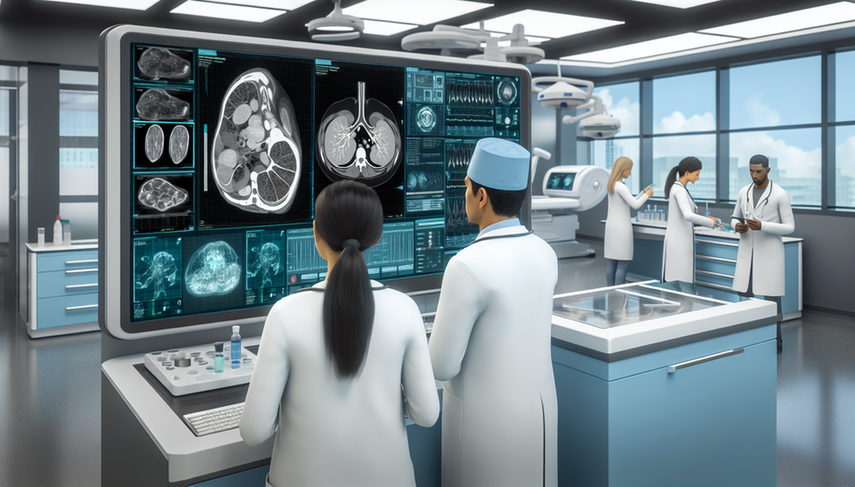Emerging Diagnostic Technologies: Liquid Biopsy and AI in Radiology for Medical Innovation

In the realm of emerging diagnostic technologies, liquid biopsy and AI in radiology are revolutionizing modern medical diagnosis. These innovations not only promise to enhance diagnostic accuracy but also transform the way we approach the treatment and monitoring of various pathologies, particularly in oncology. The integration of these technologies is enabling earlier and more precise disease detection, leading to improved patient outcomes.
Diving Deeper into Liquid Biopsy and AI in Radiology
Liquid biopsy has become a crucial tool for the diagnosis and monitoring of oncological diseases. This non-invasive method allows for the detection of circulating tumor DNA (ctDNA) in plasma, providing valuable information about the presence and evolution of tumors without the need for invasive procedures. Recent studies have demonstrated its effectiveness in the early detection of lung cancer, allowing for more precise monitoring of metastatic dissemination [1].
On the other hand, artificial intelligence (AI) in radiology is transforming the interpretation of medical images. AI can analyze large volumes of imaging data quickly and accurately, identifying patterns that may go unnoticed by the human eye. In the context of breast cancer, for example, AI and radiomics are enhancing screening strategies, reducing false positive rates and increasing test sensitivity [2]. Furthermore, the integration of AI with advanced imaging techniques, such as positron emission tomography (PET) and magnetic resonance imaging (MRI), is improving diagnostic accuracy in neuroendocrine neoplasms [3].
Conclusions
The combination of liquid biopsy and AI in radiology represents a significant advancement in medical innovation. These technologies are not only improving the accuracy and speed of diagnosis but also enabling a more personalized and effective approach to the treatment of complex diseases. As we continue to explore and develop these tools, it is essential for healthcare professionals to stay informed and trained to integrate these innovations into daily clinical practice, thus ensuring a more promising future for the diagnosis and treatment of diseases.
Referencias
- [1] Tracking early lung cancer metastatic dissemination in TRACERx using ctDNA
- [2] Novel Approaches to Screening for Breast Cancer
- [3] Improvements and future perspective in diagnostic tools for neuroendocrine neoplasms
Created 13/1/2025
